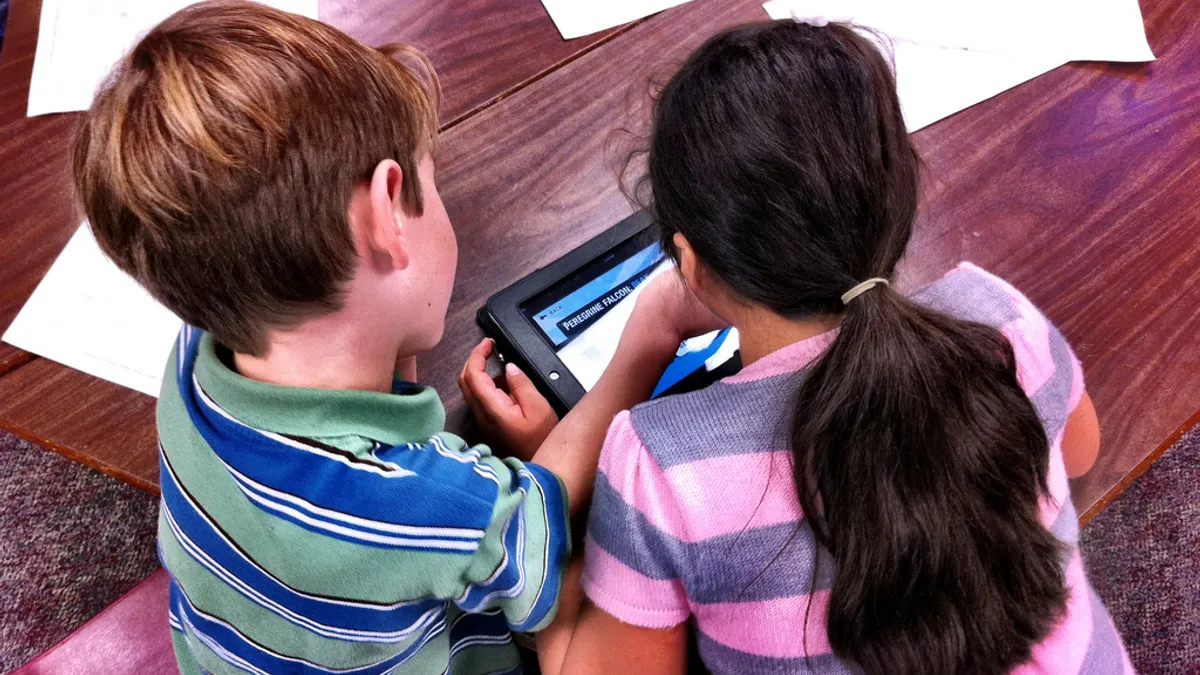With the influx of devices into classrooms, curriculum resources have naturally followed suit and adapted to the new environment accordingly. But it can also be easy to get lost in the sea of digital resources now at the fingertips of students and teachers.
A 2013 survey from PBS LearningMedia found 74% of teachers reporting that tech helped reinforce and expand on content, 74% reporting it boosted student motivation, and 73% saying it served a variety of learning styles. Reporting from Education Week in 2015, however, suggested the incremental nature of the digital transition would leave many schools reliant on print materials for several more years due to financial and technical concerns.
Regardless, these materials aren’t going away anytime soon and will only become more commonplace — and there are a number of things administrators should know before taking the plunge.
More than just digital text
A digital course material is much more than just a PDF scan of a textbook. It includes video, interactive components and other features meant to immerse students. The definition now stretches to include educational games and virtual reality simulations, as well.
A simple scan of textbooks or worksheets is among the biggest pet peeves of ISTE CEO Richard Culatta, who told us in 2015 when he was still heading up the U.S. Department of Education’s Office of Ed Tech, “We need to be using technology to really transform learning, to really turn students into creators and give them the tools to design and invent and engage and not just do digital worksheets.”
The good news for educators is that most of the major educational publishers are now offering and further developing digital materials and curriculums that meet that standard. And the U.S. Department of Education’s 2017 National Ed Tech Plan also covers steps in implementing meaningful ed tech initiatives, noting the differences between things like active and consumptive tech use. A number of other trends such as maker spaces and project-based learning are also giving educators the opportunity to put what students are experiencing digitally in a real-world context.
How are schools approaching it?
Many schools and districts adopting digital materials have adopted blended or flipped learning approaches, which tend to have students digitally consume information typically delivered in a lecture format. Class time is then used for deeper discussion or the completion of assignments that would have formerly been homework, with the teacher on hand to guide students who need additional support.
Of course, new approaches to pedagogy, curricular materials and resources require new training. Many of the publishers behind the content — like Discovery Education, McGraw-Hill Education and Pearson — also offer professional development services and networks. And a number of associations, like ISTE and CoSN, are great resources for gaining best practices and connecting to other educators.
Where is it heading?
As previously stated, digital curriculum materials are only going to become more prevalent. When looking at Chromebooks alone in December 2015, there were an estimated 30,000 new ones activated in U.S. classrooms daily. And research from Futuresource Consulting saw continuing growth on the horizon for U.S. device sales to education in that school year — though that growth was slowing from massive double-digit numbers in prior years.
The takeaway is that with that sort of device permeation in classrooms, digital resources are a necessity. However, they may not continue to be provided by vendors at the same rate.
Quickly rising in prominence over the past few years have been open educational resources, which are free-to-use, high-quality materials that can be repurposed and often customized by educators to fit their needs. Backers to efforts to build out these options include the William & Flora Hewlett Foundation, the Bill & Melinda Gates Foundation and the U.S. Department of Education, which has launched a #GoOpen campaign. The abundance of these resources, however, has created what Education Week reiterated is a “needle in the haystack” problem when it comes to finding the cream of the crop.
Publishers are continuing to adapt to compete, with the International Publishers Association noting the “built-in” sustainability, quality and efficacy of materials “carefully researched, designed, and reviewed through an established quality assurance process.” The market could ultimately benefit educators via a wider variety of more flexible options all around.








 Dive Awards
Dive Awards












